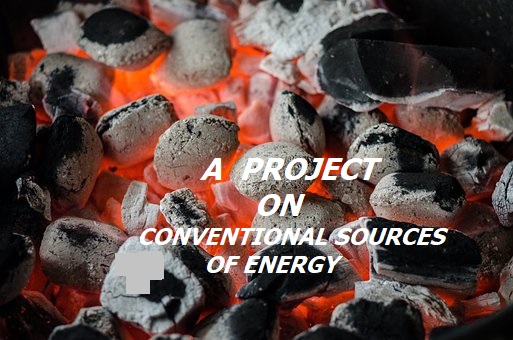The benefits and drawbacks of Conventional Sources Of Energy
The benefits and drawbacks of Conventional Sources Of Energy are highly demanding projects worldwide. Are you also looking for a project on “The benefits and drawbacks of Conventional Sources Of Energy”? Then you are at the right place. Here, we are going to provide you with details about “The benefits and drawbacks of Conventional Sources Of Energy”. So, let’s get started.
Introduction:
Over millions of years, dead plants and animals decompose into fossil fuels.
They are dug up from the earth and processed into goods that can be used to fuel our contemporary society.
Natural gas is used to heat homes and businesses, coal is used to produce electricity, and oil is refined into gasoline for transportation.
Although traditional energy sources have supported our economy for a long time, they have a number of drawbacks.
The fact that they are limited resources, which means they will ultimately run out, is one of their biggest drawbacks.
They also play a significant role in climate change.
This is because burning fossil fuels puts greenhouse gases into the atmosphere, including carbon dioxide,
which traps heat and causes global warming.
As a result, efforts to develop and use renewable energy sources including solar, wind, and hydropower are increasing.
These renewable energy sources do not have the same negative effects on the environment as traditional energy sources.
However, the switch to renewable energy will take some time, and for the foreseeable future.
Therefore, non-renewable sources of energy are likely to continue to be a major source of electricity for our civilization.
Merits of Conventional sources of energy
Non-renewable sources of energy include fossil fuels such as coal, oil, and natural gas, as well as Nuclear Power.
Here are some of the advantages of using non-renewable sources of energy
Reliability
Non-renewable sources of energy are generally reliable and can provide a constant supply of energy.
This makes them ideal for powering large-scale industries and meeting the energy demands of growing populations.
Affordability
Non-renewable sources of energy are often cheaper than alternative sources of energy.
These alternative sources of energy include solar and wind power.
This makes them more accessible to people and industries that may not have the financial resources to invest in renewable energy.
Energy density
Conventional sources of energy have a high energy density.
Here high density means that they can produce a large amount of energy in a relatively small amount of space.
This makes them more efficient for large-scale energy production.
Established infrastructure
Non-renewable sources of energy have a well-established infrastructure that allows for easy transportation, storage, and distribution.
This makes them more practical for meeting the energy demands of large populations and industries.
Technology
Conventional sources of energy have been extensively studied and optimized over the years.
This has further resulted in advanced technologies for extracting, processing, and utilizing these resources.
This has made conventional sources of energy more efficient and effective in meeting our energy needs.
However, it is important to note that the use of non-renewable sources of energy has several disadvantages.
It has a negative impact on the environment and contribution to climate change.
The limited availability of fossil fuels and the safety concerns associated with nuclear power also make non-renewable sources of energy
unsustainable in the long term.
As such, there is a need to transition towards renewable energy sources to ensure a sustainable future.
Demerits of Conventional sources of energy
There are several demerits of non-renewable sources of energy, which include:
Environmental Pollution
Non-renewable sources of energy like coal, oil, and gas release harmful pollutants into the atmosphere when they are burned.
This causes air pollution, which can lead to respiratory problems and other health issues.
Climate Change
Burning fossil fuels also releases carbon dioxide and other greenhouse gases into the atmosphere.
This contributes to global warming and climate change.
Amazon Forest Fire Project: ‘Flipped’ to Emitting More CO2 Than It Absorbs.
Limited Availability
Non-renewable sources of energy are finite resources and will eventually run out.
As the demand for energy continues to increase, we will eventually exhaust these resources.
High Cost
Non-renewable sources of energy can be expensive to extract, refine, and transport.
This can make them costly for consumers, particularly if they are located far from the source of the energy.
Dependence on Foreign Sources
Many countries rely on foreign sources of oil and gas to meet their energy needs.
This dependence can create geopolitical tensions and make these countries vulnerable to supply disruptions and price fluctuations.
Habitat Destruction
Extracting non-renewable sources of energy can lead to habitat destruction and loss of biodiversity.
This is particularly true for activities like mining and drilling, which can have a significant impact on local ecosystems.
Safety Hazards
Non-renewable sources of energy can also be dangerous to extract and transport.
This includes risks associated with oil spills, pipeline explosions, and mining accidents.
These hazards can have significant environmental and human costs
Use Of Conventional sources Of Energy
Conventional sources of energy refer to the sources of energy that have been used for centuries to meet the world’s energy needs.
The most commonly used non-renewable sources of energy include fossil fuels such as coal, oil, and natural gas.
These sources of energy have been used extensively over the years and have played a significant role in shaping the modern world.
Some of the primary uses of non-renewable sources of energy include:
Power generation
One of the primary uses of non-renewable sources of energy is for power generation.
Fossil fuels are burned in power plants to generate electricity that powers homes, businesses, and industries.
Transportation
Non-renewable sources of energy are also widely used as fuels for transportation.
Gasoline, diesel, and aviation fuel are all derived from fossil
fuels and are used to power cars, trucks, trains, and airplanes.
Heating
Conventional sources of energy are also used for heating purposes.
Natural gas is widely used for home heating, and oil is used for heating
homes and buildings in colder climates.
Industrial processes
Many industrial processes require a significant amount of energy, and non-renewable sources of energy are often used to meet this demand.
For example, coal is used to produce steel, and natural gas is used in the production of chemicals and fertilizers.
Agriculture
Non-renewable sources of energy are also used in agriculture.
Fossil fuels are used to power tractors, irrigation systems, and other farm machinery.
Despite their widespread use, conventional sources of energy have negative impacts on the environment and contribute to climate change.
Therefore, efforts are being made to shift to renewable sources of energy, such as wind and solar power, which are more sustainable
and eco-friendly
Compare conventional source and non-conventional sources of energy
Conventional sources of energy are those that have been used for a long time and are still the primary sources of energy for many countries.
These include fossil fuels like coal, oil, and natural gas, as well as nuclear energy.
Non-conventional sources of energy, on the other hand, are those that have gained popularity in recent years and are considered to be more
environmentally friendly.
These include renewable sources of energy like solar, wind, hydro, geothermal, and biomass energy.
Here are some key differences between conventional and non-conventional sources of energy:
Environmental Impact
Conventional sources of energy often have a significant negative impact on the environment, as they release pollutants into the air, water,
and soil. In contrast, non-conventional sources of energy are generally cleaner and have a smaller environmental footprint.
Availability
Conventional sources of energy are finite resources and will eventually run out.
On the other hand, non-renewable sources of energy, are renewable and will never run out.
Cost
Conventional sources of energy can be expensive to extract, refine, and transport.
Moreover, the cost can vary depending on the location and availability of the resource.
Non-renewable sources of energy can also be expensive to set up,
but once the infrastructure is in place, they can be more cost-effective over the long term.
Dependence
Conventional sources of energy often require countries to rely on foreign sources for their energy needs.
This can create geopolitical tensions and economic instability
Non-renewable sources of energy can help countries become more energy independent and reduce their dependence on foreign sources of
energy.
Infrastructure
Conventional sources of energy often require a significant infrastructure to extract, transport, and use.
Non-renewable sources of energy also require infrastructure,
but this infrastructure is often more decentralized and can be easier to set up in remote areas.
In summary,
while non-renewable sources of energy have been the primary sources of energy for many years,
they have significant negative impacts on the environment and are finite resources.
Non-renewable sources of energy, while still relatively new, are renewable and have a smaller environmental footprint.
However, they can be more expensive to set up initially and require significant infrastructure to be put in place
Conclusion:
In conclusion, conventional energy sources such as coal, oil, and natural gas have played a significant role in shaping the modern world.
Moreover, it has also fulfilled and met global energy demands.
These sources of energy have been widely used for power generation, transportation, heating, industrial processes, and agriculture.
However, the use of conventional energy sources has negative impacts on the environment.
This includes air and water pollution, habitat destruction, and greenhouse gas emissions that contribute to climate change.
As the world faces the challenges of climate change and sustainable development,
there is a growing need to shift towards renewable energy sources that are more sustainable and eco-friendly.
Therefore, it is essential to explore alternative energy sources and technologies.
This will further help reduce the dependence on conventional energy sources and promote a sustainable energy future for all.





0 Comments